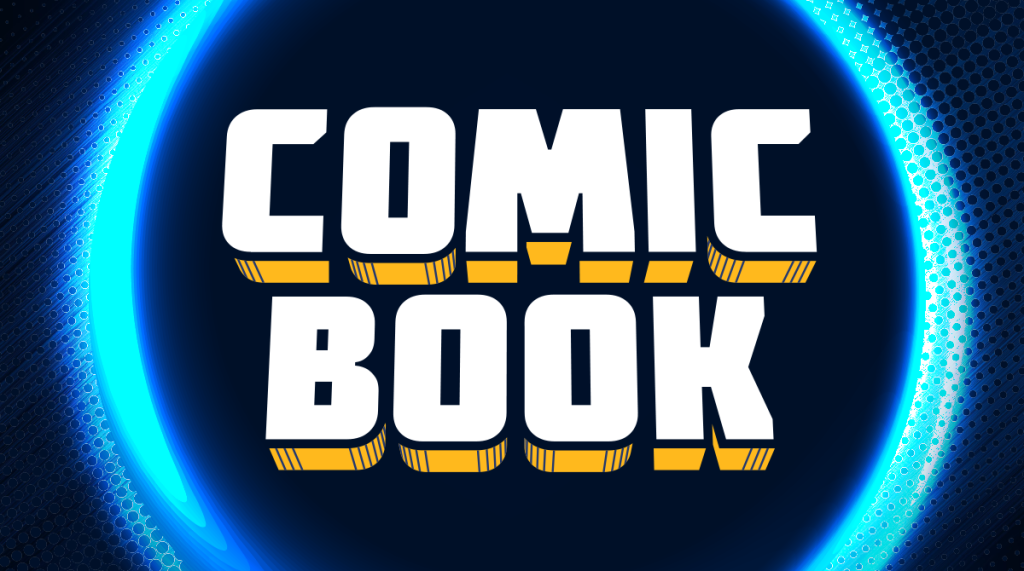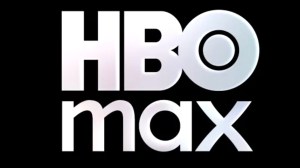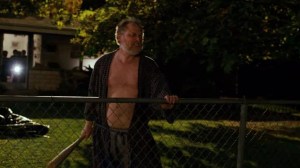You Brought Me the Ocean hits comic book stores this week and with it comes a reimagined origin for one of comics’ enduring heroes, Aqualad. The book tells the story of Jackson Hyde, the latest young superhero to take on the Aqualad mantle and while Jackson has been a somewhat prominent character in animated DC offerings as well as comics in recent years, You Brought Me the Ocean takes a deeper look at the character’s origin, one that weaves the various elements of details of Jackson’s story thus far into a beautiful, relatable tale not just of coming of age and personal acceptance, but one of coming out as well, allowing readers to follow along as Jackson not only comes into his own as a young man making major decisions about his future but as he discovers and embraces who he really is.
Videos by ComicBook.com

You Brought Me the Ocean is a beautiful, human story that readers of all ages and experiences will be able to relate to between the beautiful art by Julie Maroh and the rich, achingly raw writing by Alex Sanchez. ComicBook.com had the opportunity to speak with Sanchez about You Brought Me the Ocean, what his approach to this unique take on Aqualad was like, and the importance of its message of self-acceptance, including what Sanchez hopes readers take away from the book no matter their gender identity or sexual orientation: that it’s okay to be who you are.
Read on for our chat with Sanchez.
Genesis
ComicBook.com: How did You Brought Me the Ocean come about? What was kind of the genesis of that and how did you get involved?
Alex Sanchez: Well for me, I got an email from DC and I was like, wait a minute, is this a joke? It was the way I learned it happened was at DC they were rolling out a new line of graphic novels, reaching out to new audiences that may not be the historic sort of traditional comic book readers. They’re trying to broaden their audience and reach out to more people. They also wanted these books, as novels, to stand as more, to be more than just superhero stories, to have more, shall we say, more emotional aspects to them, more dealing with real life, teen issues, real life issues for young people growing up. To have these sort of superheroes dealing with those real life issues. So that was hugely appealing to me and similar to what you said that then you can read it. It has all these different aspects but it’s not just about super powers but that it has these other dimensions.
So in any case, they reached out to me and they had this character, Aqualad, who as you well know, a lot of these characters they go through different iterations and versions of it over the decades. So in at least a couple previous versions I think the character had identified as gay. So then they reached out to me. Apparently they asked around and said who would be a good YA author to write about a story with a gay character and deal with aspects of sexuality as an issue that young people deal with. So that’s how they came across me. They reached out to me and I had a big gulp and … Not a big gulp like at 7-11. I took a huge breath and said okay, yeah sure I’ll try this.
So they asked me to do a pitch for it. I did a pitch, they were very emphatic in that I didn’t need to feel bound to previous iterations of this character, I didn’t need to be doing a lot of research into who has this character been but really make the story my own. So they gave me a lot of creative freedom with that. So I started just pulling together. I did a little bit of research on Aqualad. Saw some things, some aspects that I would like to use like the idea of him being in New Mexico, so far away from the water, I thought that added a nice element of conflict there. In a previous iteration where they did that he was living in Silver City.
Having traveled through there, through New Mexico several times, I was like but there’s this cool spot called Truth or Consequences. Not only does that have a neat history to it but it would be since so much of the story would be about being honest and being true to who you are, that would be a nice thematic component. That would add a lot of resonance in there. So I started pulling that in and then aspects from my own experience growing up and my struggles with sexuality and crushes on boys and confusion about girls. One of the ways I coped with that was scuba diving, learning to scuba dive. I’ve always loved the ocean and have dreamt about it at least once a week all my life. So I brought in that component.
As you know, the creative imagination works sort of drawing on this piece and that piece, parts of my own story, parts of the comic characters. Part of the fun of it too was that DC was like, now we need to have some link to the DC Universe in that. So that’s where the idea came in of well let’s bring in Superman flying across the country and they see him. So yeah, that sort of freedom and suggestions allowed me to bring together all these different aspects into the book.
That little inclusion of Superman early on was actually one of those things that really, I think, in a major way kind of makes the book feel more real because you’ve got these two kids, they see this streak, they see Superman, and their reaction to it is so human. I just thought that was such a cool element.
Well thank you.
Process
If I recall correctly, You Brought Me the Ocean is your first graphic novel. How did writing this differ from your previous work? If it didn’t differ too much, in what ways was it similar?
Well the big difference for me is that usually I write a full manuscript and then present it to a publisher. So it’s all written and of course it goes through the editorial process. It’ll go through different revisions and changes and drafts. But basically the whole story is all fleshed out. Sure it’ll change but it’s all there. For this, what happened is after that initial pitch, which was basically just a long paragraph and DC asked for a synopsis, I did a 12 page synopsis and they’re like, okay, sounds good, let’s do it. I was like, wait a minute, the whole story, it needs to be fleshed out. They’re like, yeah, yeah, that’s what we’ll do.
So it was a very collaborative process and working with my wonderful editor Sarah Miller to actually script out and flesh out the story in chunks. So the first 25% and then the next 25%. It was very scary like what if this doesn’t all work out? Sarah was wonderful in this way, reassuring like no, it’s all going to work out, it’s all there. So that for me was a big difference working in that sort of more sequential way and a very collaborative way. The sequential part, that was a little scary but the collaboration, I just love that.
So then after that, near the end of that first 25% that’s when the artist, Julie Maroh came on board and then a big difference was that usually when I write I have sort of a vague idea of what the character looks like. But to actually see an artist come up with their interpretation of what the character looks like it was sort of this experience of, ah, well, that’s interesting. That not exactly how I imagined them but yeah, yeah, I like that.
Especially with Jules, who just put so much emotion and empathy into the characters. It was just breathtaking. A lot of their illustrations, just to see how wow, the scenes just came to life. That old adage of a picture is worth a thousand words. That was just such an exciting, exciting process. Sarah and I, every week we could hardly wait until Friday when the drawings for that week would come in. It was just exhilarating. So those were some of the differences.
In terms of similarities, learning that it’s storytelling. In I think my first conversation with the senior editor who reached out to me, that’s what she said. When I said I’ve never written a graphic novel, they were like “Yeah, we know but you know how to tell a story.” So I think that’s the big similarity. Then also just in general in terms of storytelling, I think one of the things I’ve always, years and years ago I saw this film about Disney animators. They said something that has always stuck with me. They said “In every frame we ask ourselves, what are the characters thinking? What are they feeling? How do they show it?”
So that’s something that I’ve incorporated into my writing. What I found as I was just reading so many graphic novels while I was doing this, just going through them, and seeing the ones that excite me the most are the ones in which in every panel there’s some action, some show of emotion, some expression. Something dynamic that makes it more than just talking heads. So in this case, as I was writing, yes doing as I had before I would see how the characters can show what they’re thinking or feeling but even more so. That way, giving suggestions to the artist and then letting them interpret that, interpret those. So making the actions, really putting them on the page, making them a visual. Working together with the artist, that was a big difference.
Universal Experiences
Speaking of the storytelling, one of the things that really stands out in the book is that we’re getting a coming out story for Jake. But we’re also getting this larger story of self-acceptance on a lot of fronts. It’s not just even with Jake. It’s with his friends as well. We’re seeing the people in his world also kind of come to terms with themselves and their differences and things. These are all very real struggles and challenges. These are things that I think any reader is going to identify from their own experience current or even people like me who are reading it as an adult, thinking back to my own youth. It really hits home in a way that is very unique. What was your approach to telling that story?
Well so much of the creative process just happens intuitively. A lot of it is just as a writer and certainly writing about young people is remembering what were the struggles that I went through as a young person and how did I navigate them. So remembering what it was like to be a teen. As you’re pointing out, part of what makes coming out stories so powerful is that they’re not just about coming out in terms of our sexuality, it’s [inaudible] of different sexual orientations. It doesn’t matter what our sexual orientation is, we all have aspects of ourselves that were challenged by that we find difficult to accept. Part of our growing up is learning to love and accept ourselves and learning to love and accept other people. So part of what excited me of this story is the way, as you said, different aspects started coming to me of the wonderful metaphor between superheroes and growing up queer, but we all have these different aspects of ourselves that when we can truly love and accept ourselves then we’re finding that’s really our super power for any of us.
Harsh Realities
Kind of speaking of that, one of the things in this book stands out a little bit too, maybe some of the more similar type stories of coming out and self-acceptance, is that while we do see all that wonderful support that Jake has and doesn’t realize he has right away, we also see there’s no shying away from the harsh realities of things that people who are “different” experience. I’m speaking specifically of the bigots in his life. How important was it for you to include that harsh reality that so many people face in this story?
Well for me, all the fiction that I write is realistic. So even this story, I think it’s important to acknowledge that homophobia and bullying continue to persist. Yet, to also realize that we’re living in an era in kind of a cultural shift, certainly in terms of LGBTQ people that there’s just so much more acceptance and visibility. That is part of what empowers us and allows us to deal with the persistent harsh realities. When Rainbow Boys first came out almost 20 years ago, part of what the publisher found groundbreaking about it was that these young people were connecting.
I think that’s what I’ve continued to voice in my books and certainly in this one is that the tremendous power that can come when we realize we’re not alone, when we can reach out to other people and accept the support of others. There’s power in community, power in reaching out. I’ve experienced that in my life whether it’s in terms of my sexuality or in terms of my writing and other aspects. When I can have the courage to reach out to others and show my vulnerability or reveal my vulnerability, then that allows me to draw upon their strength. So I think that’s part of what ended up being communicated in this story, the power that for these three young people that they can have as a result of being vulnerable to each other. They can draw strength from each other.
One Thing
What is one thing you hope readers take away from this book?
Well I hope what they take away is that they can be who they are, regardless of gender identity or sexual orientation. It’s okay to be who you are. My agent tells me that’s what ends up coming through in all my stories. I wish I could write a different story but that’s the one that seems to keep coming out. Part of what’s been probably the most rewarding about writing for young people is getting the messages, the email messages from them about how important the books have been for them in terms of either seeing representations of themselves, like a sort of mirror, or window into the lives of other people. So I help them and how that inspires them. Hearing from them inspires me so I hope that what they’ll take from it is that inspiration to be treated as they are and discover their super power in that.
You Brought Me the Ocean is on sale now.








